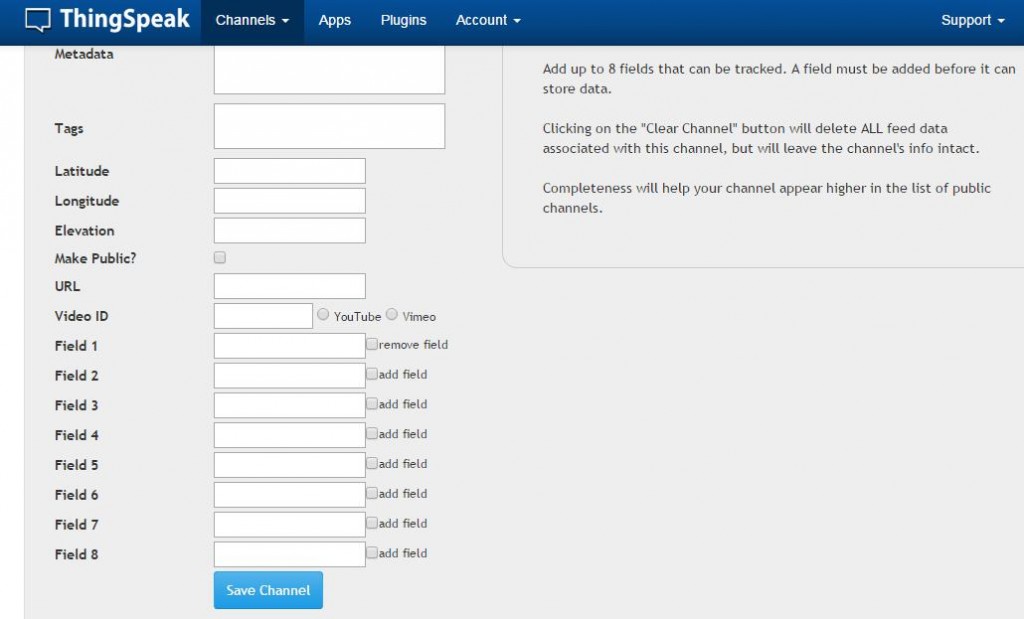Are you using ThingSpeak to capture and save your IoT device data points? Ever felt constrained by the 8 field channels limit?
I was.
All 8 of my channel fields were in use. None could be deleted. And I needed to save one additional value. But the solution was quite simple and straight-forward. This short post will serve as a reference “note to self”, and perhaps others who may stumble upon this issue…
A Simple Solution
First of all, as noted, I needed more than 8 fields in my channel’s data set. But a ThingSpeak channel is limited to 8 fields.
Hmm, what to do?
While you are limited to 8 data fields, a channel is not constrained by it’s own channel data. So the answer is right there…just add another channel and you get another group of 8 data fields. Since the additional data fields can be accessed from any of the master channel’s “plug-in” webpages, you have just doubled the number of entries in a single record, from 8 to 16. There is really no limit to how many channels that can be added, scaling the data set upward by 8 fields for each channel added.
// set your channel IDs here
var channel_id1 = 12345;
var channel_id2 = 12346;
var channel_id3 = 12347;
// set your channel read api keys here
var api_key1 = '9XXQ4X79WQJC72SZ';
var api_key2 = '2KJQ2Q82YTPA23CQ';
var api_key3 = '5SWQ9F87UULD86NB';
function getData() {
//Get Data Set 1
$.getJSON('https://api.thingspeak.com/channels/' + channel_id1 + '/feed/last.json?api_key=' + api_key1, function(data1) {
//Get Data Set 2
$.getJSON('https://api.thingspeak.com/channels/' + channel_id2 + '/feed/last.json?api_key=' + api_key2, function(data2) {
//Get Data Set 3
$.getJSON('https://api.thingspeak.com/channels/' + channel_id3 + '/feed/last.json?api_key=' + api_key3, function(data3) {
//Do something with the data here
//Save the maximum of data1.field2 and data3.field4 in data3.field4
if(data1.field2 > data3.field4) {
maxvalURL = "https://api.thingspeak.com/update?key=" + api_key3 + "&field4=" + data1.field2;
$.post(maxvalURL);
}
});
});
});
Note the nested jQuery “$.getJSON” to retrieve the ThingSpeak channel data. All processing needs to be performed inside the inner nest in order to keep the values in scope.
And then there was the need to capture a value that could reset, potentially anytime. In my case, one of the requirements was to save a maximum value. This value represents the device run time since it last reset. It provides a measure of the systems reliability. In the above code example:
current-run-time-since-last-reset = data1.field2;
saved-max-time-since-last-reset = data3.field4;
Instead of retrieving a constantly growing array of values from a ThingSpeak field and then evaluating the array for the maximum value, the current max value is compared against the last run time value stored. This simple running “max value” algorithm runs faster and requires minimal code.
Conclusion
Scalable ThingSpeak data sets. This short post should serve as a reference…a reminder of just how simple and obvious it is to expand your sensor data beyond the 8-field limit imposed on a ThingSpeak channel.
I hope you find this information useful…
![]()
